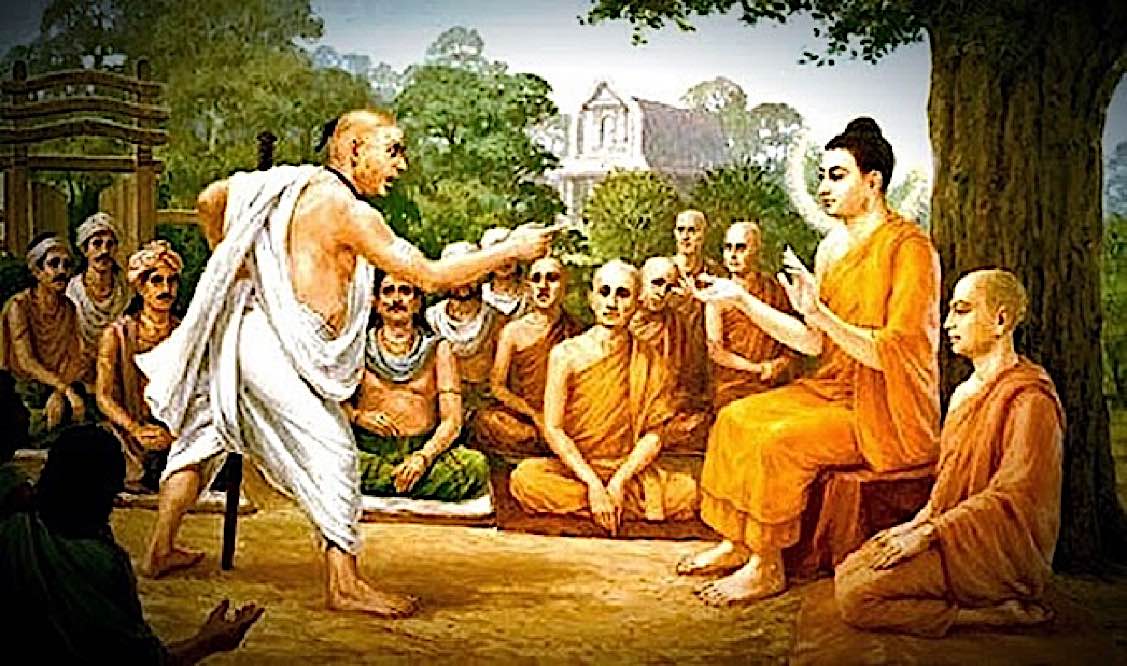A Wheel With Eight Spokes: Why Picking and Choosing “Beliefs” — or “Revisionist” Buddha Dhama — Can Obstruct Your Buddhist Practice
” The eightfold path is often represented as a wheel with eight spokes. Pick a wheel with just one or two and it won’t take you very far.” — Mark Vernon [13]
“Some traditional Buddhist teachers tend to serve “Dharma-Lite” like “Coca-Cola Lite,” rather than “the Real Thing” Dharma,” said Alexander Berzin in June 2000 talk. [1] He was referring to “lite” motivations in modern, westernized Buddhism, where teachers avoid the topic of rebirth or other core beliefs— to make teachings more suitable to the western psyche.
For the purposes of this feature, I’m going to call it “Designer Dharma” — picking and choosing which core beliefs to subscribe to—based on personal belief, culture, “laziness” or preference. A separate issue is more systemized cultural “modern revisionism”.
Often cited in support of this notion of “pick and choose” and “revisionism” is the Kalama Sutta, sometimes referred to as “the Buddha’s charter of free inquiry”—an regularly mistranslated and poorly interpreted sutta. [11] (See more on Kalama Sutta below). Since I, myself, often pick and choose, and have difficulty with some doctrines such as rebirth, I thought I’d research “What the teachers say.”
Zasep Tulku Rinpoche: “You can be a Buddhist without believing in reincarnation.”
In a recent interview with Venerable Zasep Tulku Rinpoche, I mentioned the difficulty some westerners have with some Buddhist doctrines such as reincarnation. Rinpoche replied,
“You can be a Buddhist without believing in reincarnation. Don’t worry about the past. The future is a dream. Stay in the now. The most important thing is to watch your body, speech and mind, and if you cultivate merit, and practice loving kindness, then you are a good Buddhist.”
[10 Interview at Gaden Choling, Fall 2015]
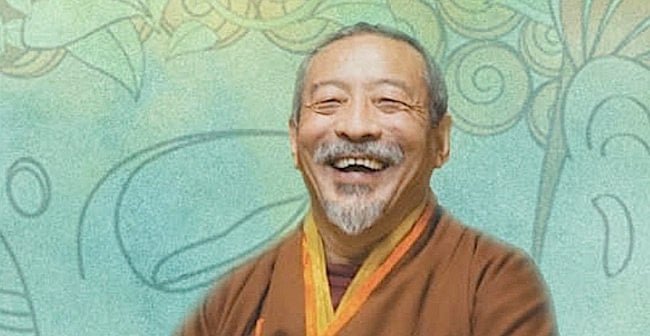
 However, it’s important to note that Rinpoche was not advocating “Designer Dharma” but rather, reassuring those who might have difficulty with a specific belief not to be discouraged but to continue practicing.
However, it’s important to note that Rinpoche was not advocating “Designer Dharma” but rather, reassuring those who might have difficulty with a specific belief not to be discouraged but to continue practicing.
The most common advice from teachers of western students is best summarized in this quote from Thanissaro Bhikko: “You don’t have to believe in rebirth, you just have to take it as a working hypothesis.” [9]
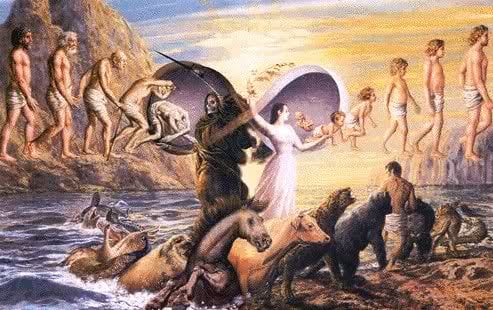
Designer Dharma: pick-and-choose Buddhism
Many westernized Buddhists, myself included, tend to pick and choose Buddhist teachings, particularly with relation to difficult topics such as rebirth or reincarnation that might not to resonate with western culture and rational scientific minds. Many of my Buddhist friends merrily avoid these topics, rather than confront them. If pushed, some will say, “I’m a Buddhist, but I don’t believe in X.” The biggest “X” tends to be “rebirth” I’ve found.
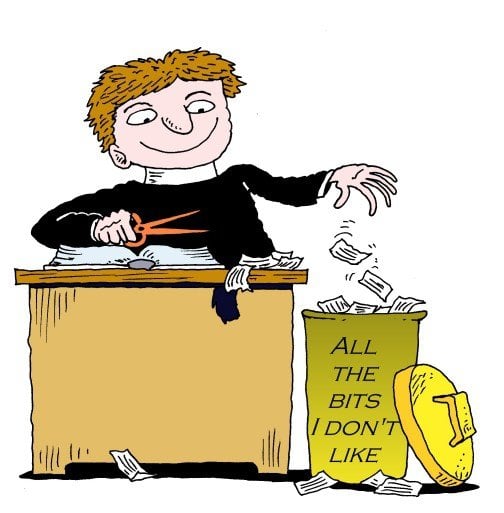
Core beliefs in Buddhism—which might, or might not become part of a Buddhist’s “Designer Dharma”—almost invariably include:
- the Four Noble Truths
- Dependent Origination
- the Eightfold Path
- the Three Characteristics of Existence
- the Three Jewels
- Five Precepts
- Karma
- Rebirth
- Nirvana
Some of my Buddhist friends definitely “subscribe” to the Four Noble Truths and Eightfold Path, but can’t bring themselves to accept rebirth. Others, like myself, accept the core beliefs, but need constant reinforcement on rebirth and karma.
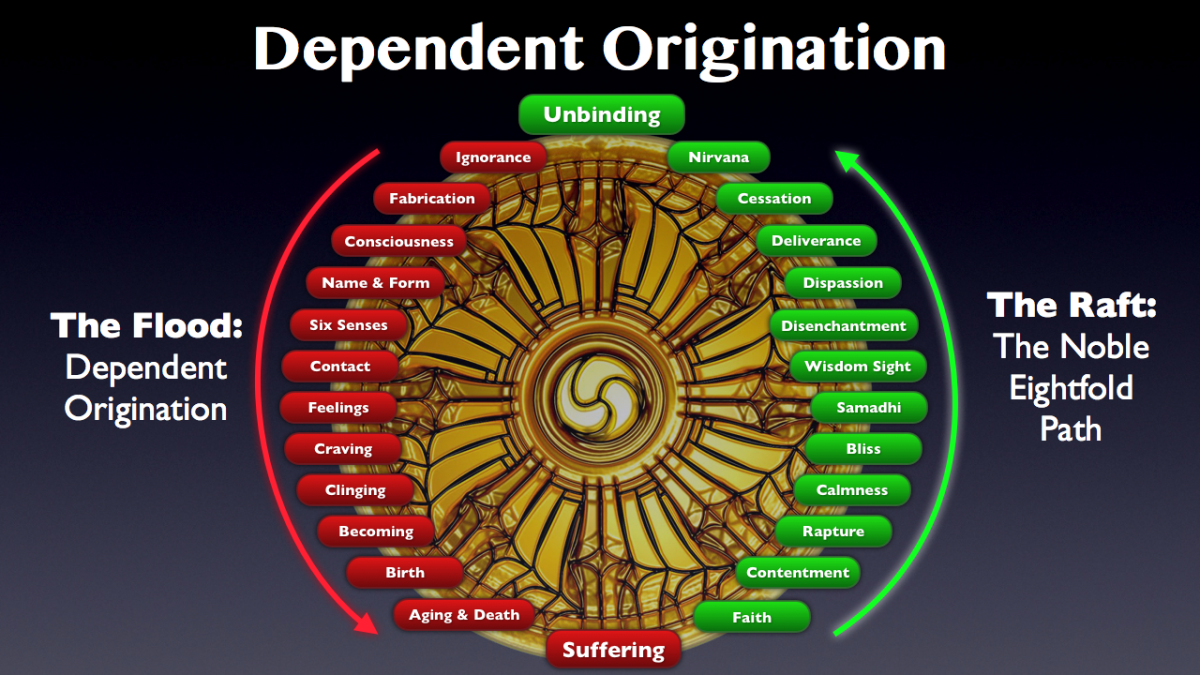
Agnostic Buddhism: “Teachers… use the idea of rebirth metaphorically”
“Many contemporary forms of Buddhism in the West—especially Zen and vipassana—seem to pay little attention to the doctrine of rebirth,” writes teacher Stephen Batchelor. [8] “Teachers in these traditions often use the idea of rebirth metaphorically to describe the moment-to-moment process of “dying” and being “reborn.” However appealing, psychologically astute, and didactically skillful such interpretations may be, they can give rise to the misleading impression that in traditional Zen or Theravadan cultures the doctrine of rebirth is likewise not taken literally.”
“Rebirth has always been a central teaching in the Buddhist tradition,” writes Thanissaro Bhikkhu of Metta Forest Monastery. “The earliest records in the Pali Canon indicate that the Buddha, prior to his awakening, searched for a happiness not subject to the vagaries of repeated birth… On the night of his awakening, two of the three knowledges leading to his release from suffering focused on the topic of rebirth.” [7]

Even some westernized Tibetan Buddhists tend to practice “Dharma-Lite” when it comes to rebirth—this despite the fact that His Holiness the Dalai Lama is accepted by them to be the 14th incarnation. Certainly, in Mahayana Buddhism, the belief in bodhisattvas who continue “taking birth as long as there are living beings in the world that need to be saved from suffering,” makes rebirth an unavoidable core belief. [8]
Mark Vernon: “Half-baked” western cultural Buddhism?
In a very interesting feature on “Buddhism and the dangers of pick’n’mix religion”, Mark Vernon makes several key swipes at what he calls pick’n’mix religion. Understandably, he writes at length about the notable efforts of Stephen Batchelor, known for his somewhat controversial Buddhism Without Beliefs [14]—himself an ex-monk “heavily engaged in bringing Buddhism into the west.” He points out that Batchelor is “courting trouble along the way” because “he knows that if Buddhism is truly to address the human condition as manifest with modernity, it must resist the temptations of the quick sell.”
“When Buddhism appeared in Japan, it took three centuries for its Zen manifestation to emerge. Buddhism has been a part of western culture for about half that time, since philosophers like Schopenhauer first encountered it; which perhaps explains why it can appear a little half-baked.” [13]
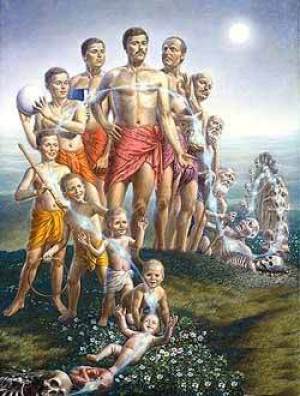
Dalai Lama Teaches on Reincarnation: “…accept the existence of past and future lives”
“In order to accept reincarnation or the reality of the Tulkus, we need to accept the existence of past and future lives,” wrote the Dalai Lama from Dharamsala in September, 2011. [6] “Sentient beings come to this present life from their previous lives and take rebirth again after death. This kind of continuous rebirth is accepted by all the ancient Indian spiritual traditions and schools of philosophy, except the Charvakas, who were a materialist movement. Some modern thinkers deny past and future lives on the premise that we cannot see them. Others do not draw such clear cut conclusions on this basis.”
The Dalai Lama explains the arguments for rebirth: “There are many different logical arguments given in the words of the Buddha and subsequent commentaries to prove the existence of past and future lives. In brief, they come down to four points: the logic that things are preceded by things of a similar type, the logic that things are preceded by a substantial cause, the logic that the mind has gained familiarity with things in the past, and the logic of having gained experience of things in the past.” He adds that there are many people “who can remember their immediate past life.”

Science: Anecdotal evidence, but no verifiable corroboration
Never-the-less, logic aside, such teachings require faith, as there’s no verifiable corroboration from science — even if many scientists are willing to remain open to the concept due to some anecdotal evidence. [3] Most commonly cited is extensive anecdotal evidence from Dr. Ian Stevenson, who collected data from 4500 people who spontaneously recalled past lives. There are dozens of other anecdotal studies supporting “past lives” with credibility, but not carrying the weight of proven science.

Often tossed about are pseudo-scientific theories that attempt to “prove” rebirth is possible, drawing heavily on quantum physics and Einstein. Or, using the often cited example of the “five-year body”—based on the biological fact that all cells in the body are replaced fully every five years (See Thich Nhat Hanh below). These are reinforcing inferences rather than evidence.
Nevertheless, the majority of western Buddhists—myself included—tend to bypass our discomfort with the notion of rebirth, by practicing as if we believed in it. Western teachers often coach their students just to practice, and that wisdom will come eventually. In other words, we don’t “pick and choose” but rather give the “benefit of the doubt” because we trust the wisdom of our teachers, and the ultimate wisdom of the Buddha.

Thich Nhat Hanh: “Nothing Remains the same in two consecutive moments.”
Many Zen Buddhists avoid the topic, and when they discuss it, rebirth is often presented in terms which would be palatable to westerners.
The illustrious teacher Thich Nhat Hanh, whose books are inevitable bestsellers, describes rebirth in very western terms: “When you grow very old, you are no longer the same as when you were five. When you are five, or you are ten, you are neither the same, nor a different person.” He cautions against the views of Eternalism (where a soul survives forever, returning life after life) and Nihilism (where there is nothing). “Everything is impermanence. Nothing can remain exactly the same in two consecutive moments… Birth and death are like waves, and you are riding on the waves…” (from video “Rebirth in Zen Buddhism” (see video below).
Alexander Berzin: “Rebirth… central to Buddhism.”
Alexander Berzin cautioned: “rebirth [is] a topic that is central to Buddhism. I think it’s very important to acknowledge that.” Certainly, in Mahayana Buddhism it’s central. In the lam-rim “the graduated path to enlightenment… it speaks about the pathway minds of three levels of motivation. The first level motivation is to aim for fortunate rebirth.” To be motivated by rebirth, of course, we have to believe in it. “The second level is to aim for liberation. Liberation from what? Liberation from uncontrollably recurring rebirth, which is what samsara is referring to.”
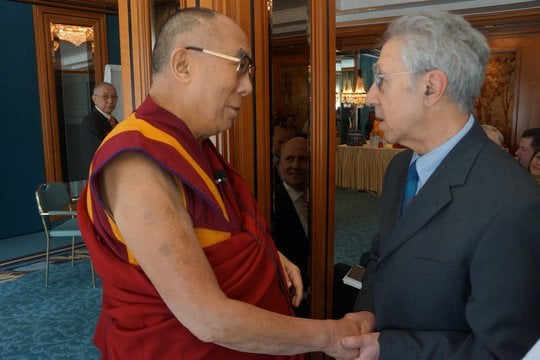
He continues by describing how important belief in rebirth is to other key Buddhist teachings on karma, compassion, the nature of our minds. Rebirth contextualizes the teachings on karma and compassion.
Four Noble Truths and Eightfold path.
The four noble truths, taught by the Buddha, were designed to free us from the cycle of samsara. He taught the path as the “eight fold path” as the remedy for “Dukkha” or suffering. Buddha clearly taught in the context of belief in multiple lives. Rebirth was commonly accepted in Buddha’s lifetime. Buddha spoke of having many previously lives.
In the west, we tend to accept concepts such as karma more as a “moral imperative” rather than a metaphysical concept, since often westerners have trouble with the concept of karmic seeds. Thus, stories such as the Jataka Tales: The Previous Lives of the Buddha—believed to be “pearls of wisdom” from the mouth of the Buddha himself [5]—tend to be soft-pedaled as “children’s fables” to illustrate morality, rather than literal stories of Buddha’s previous lives. Whether the stories were meant to be fables or literal stories is irrelevant; what’s clear is that the Buddha Himself clearly believed in rebirth.

For the modern Buddhist, we often side-step rebirth and rationalize Dhukka as “suffering in this life.” Yet, however much we wish to avoid or rationalize, rebirth is not an avoidable issue that can be side-stepped, given sutra and traditional lineage teachings.
Can We Pick and Choose What to Believe?
Teachings on reincarnation, hell realms and karma are recurrent and prominent in both sutra and tantric teachings—in Pali cannon as much as Mahayana sutra. Yet, they tend to be actively avoided in western teachings. I’ll admit I’m amongst those who has difficultly with seriously contemplating such notions, especially such things as hell realms. There might be some rational foundation for rebirth, but hell realms? (Of course, hell realms, in the west, are often described as psychological hells, rather than “actual” hells.)
The question, then, is can we “pick and choose?” Of course, in the modern world, we are free to believe anything we wish, and we’re certainly free to pick and choose. But, does picking and choosing create obstacles to our progress on the path to ultimate Enlightenment? And, did Buddha encourage or discourage the practice of “Designer Dharma”?
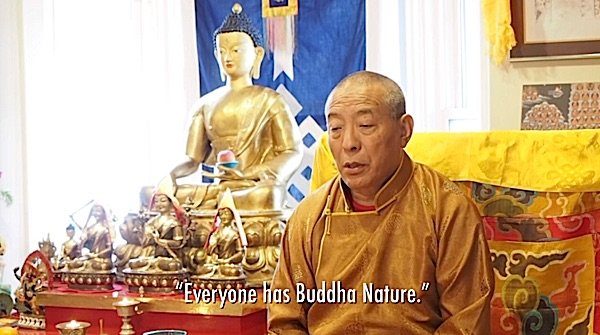
Kalama Sutta: “carte blanche for following one’s own sense of right and wrong”
In The Kalama Sutta, most often cited in relation to the concept of “picking an choosing”, translator Thanissari Bhikkhu is quick to point out: “Although this discourse is often cited as the Buddha’s carte blanche ford following one’s own sense of right and wrong, it actually says something much more rigorous than that. Traditions are not to be followed simply because they are traditions. Reports (such as historical accounts or news) are not to be followed simply because the source seems reliable. One’s own preferences are not to be followed simply because they seem logical or resonate with one’s feelings.”
![A Wheel With Eight Spokes: Why Picking and Choosing "Beliefs" — or "Revisionist" Buddha Dhama — Can Obstruct Your Buddhist Practice 14 Online, there are numerous "interpreted quotes" and "false" quotes from this popular sutta. A lively debate on "fake quotes" from Kalama Sutta on the "Fake Buddha Quotes" website more or less debunks the most common online versions of this teaching. [15]](https://buddhaweekly.com/wp-content/uploads/2015/12/Buddha-Weekly-Quote-from-Kalamata-Sutta-Fake-Buddhism.jpg)
From the Kalama Sutta, Buddha says: “When there are reasons for doubt, uncertainty is born. So in this case, Kalamas, don’t go by reports, by legends, by traditions, by scripture, by logical conjecture, by inference, by analogies, by agreement through pondering views, by probability, or by the thought, ‘This contemplative is our teacher.’ When you know for yourselves that, ‘These qualities are unskillful; these qualities are blameworthy; these qualities are criticized by the wise; these qualities, when adopted & carried out, lead to harm & to suffering’ — then you should abandon them.” [12]
Rebirth, No Rebirth? Was it a Critical Doctrine?
On the surface, the answer is “probably” since “the theme of rebirth is woven inextricably throughout the Buddha’s teachings. And freedom from rebirth has been a central feature of the Buddhist goal from the very beginning of the tradition.” [7]
Venerable Thich Nguyen Tang, a Vietnamese Buddhist monk, teaches: “To Buddhists, however, death is not the end of life, it is merely the end of the body we inhabit in this life, but our spirit will still remain and seek out through the need of attachment, attachment to a new body and new life. Where they will be born is a result of the past and the accumulation of positive and negative action, and the resultant karma (cause and effect) is a result of ones past actions.” [2]
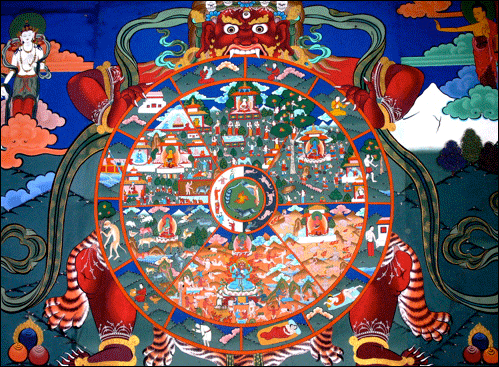
In most paths of Buddhism, our teachers advise us to meditate on impermanence and death. In part, this is to give a sense of urgency to our practice, or to encourage compassion, or simply to help us focus on the very nature of impermanence. But underpinning these meditations, particularly in lineage-inspired guided meditations, is the cycle of rebirth across endless lives. Vajrayana meditations often focus on the bardo experience — which is the experience between lives. There can be no bardo, without rebirth.
Thanissaro Bhikku: “Annihalationism… those who denied rebirth”
In an interesting article in Tricycle, Thai forest monk Thanissaro Bhikku made the point that “scholars—who should know better—keep repeating the idea that the Buddha lived in a time when everyone took for granted two principles: (1) that rebirth happened and (2) that karma had an effect on how rebirth happened.” He explained that the Pali Canon gives “clear evidence to the contrary.” His key point was that Buddha didn’t believe in rebirth because of cultural/religious norms—the Buddha argued for it. If the Buddha argued for rebirth, it follows that it’s important.
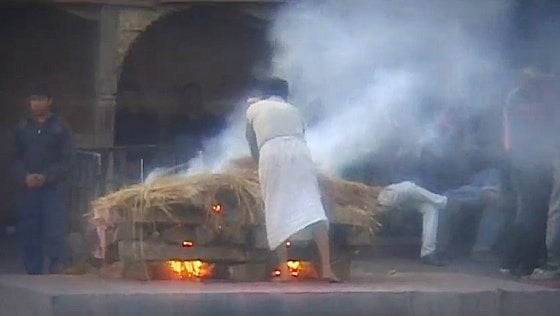
“The Buddha frequently referred to the two extremes of wrong view that blocked progress on the path: externalism and annihilationism. ‘Annihalationism’ is the term he used to describe those who denied rebirth.” He gave a compelling argument for the issue of whether karma and rebirth were mainstream in Buddha’s time. Buddha taught, however, that “if you assume that karma has results, you will act skillfully. And when you act skillfully you gain four assurances in the here and now.” [9]
Modern Revisionism: “Wow… I’m concerned others will actually think that’s Buddha’s view”
In response to an idea making the rounds on the internet, that “reincarnation is a non-Buddhist idea grafted on to Buddhism later,” a Dogen scholar associated with the San Francisco Zen Centre argued: ” I appreciate what you say about how we can’t know what happens after death, and therefore Zen doesn’t emphasize that teaching. However you also say that Dogen was very adamant that there is no reincarnation, that the idea of reincarnation is a non-Buddhist idea that was grafted onto Buddhism later on and isn’t originally part of Buddhism.’ Wow. I am concerned that others will actually think that is Dogen’s and Buddha’s view. As you probably know, there are many, many early Pali Suttas in which the Buddha talks about rebirth.” [10]
To which, a clever commenter posted, “I haven’t believed in rebirth for several lifetimes now.”
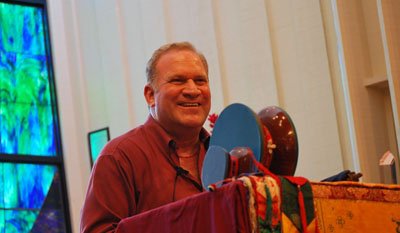
Lama Surya Das: “All traditional Buddhist teachers believe in rebirth.”
In his book, Awakening the Buddha Within, Lama Surya Das makes the strong claim, “The more classical Tibetan texts and teachers stress that to be considered a Buddhist you must: take refuge in the Three Jewels (Buddha, Dharma, Sangha); seek liberation from suffering (samsara); and believe in karma and rebirth. They say it is meaningless to seek liberation if you don’t accept karma and its implication of continuity.”
However, he continues, in the very next sentence with: “Many current Western teachers including myself agree that traditional belief in rebirth is not necessary to be a genuine Buddhist, and that an agnostic position on rebirth teachings is fine until one discovers certainty within oneself. I personally feel the most important criteria or characteristic of Buddhist spirituality is a sincere commitment to the possibility of spiritual awakening and enlightenment, combined with an open heart, an inquiring mind, and daily awareness practice based on ethics, meditation and wisdom.”
Designer Dharma: “Four Kinds of Rebirth”
In his book “Awakening the Buddha Within”, Lama Surya Das, describes four ways you can interpret rebirth, leaving it broad enough for even the most agnostic Buddhist to accept one of them:
- “Life to life … I die, I am reborn
- Intentional rebirth in linear time (…reincarnate lamas like the Dalai Lama vow intentionally to keep coming back… to liberate all beings til the end of samsara…)
- Spiritual rebirth (Total renewal and personal transformation in this very life.)
- Moment-to-moment rebirth in the timeless present… Every moment there is a new you… science tells us that almost every cell in your body changes every seven years… You are not the same person you were yesterday…”
Final Word: “The Truth of Rebirth and Why it Matters for Buddhist Practice”
There is no question that Buddha taught the cycle or rebirth. His teachings were based in his own Enlightened experience as described in various sutras such as Majjhima Nikaya (Pali Buddhist text). We can take rebirth as a “working hypothesis” rather than a doctrinal fact, as western teachers often advise to “doubtful” western students. To this, perhaps it’s best to let Thanissaro Bhikku have the last word:
“So we’re faced with a choice. If we’re sincere about wanting to end suffering and to give the Buddha’s teachings a fair test, then — instead of assuming that he was a prisoner of his own time and place, unable to question his cultural assumptions — we have to examine the extent to which, in adhering to our own cultural assumptions, we’re imprisoning ourselves. If we don’t want to drop our self-imposed restrictions, we can still benefit from any of the Buddha’s teachings that fit within those limitations, but we’ll have to accept the consequences: that the results we’ll get will be limited as well. Only if we’re willing to submit to the test of appropriate attention, abandoning the presuppositions that distort our thinking about issues like karma and rebirth, will we be able to make full use of the Canon’s tools for gaining total release.” [7]
NOTES
[1] “The Buddhist Explanation of Rebirth“, Alexander Berzin in Morelia Mexico, June 2000.
[2] “Buddhist View on Death and Rebirth“, Venerable Thich Nguyen Tang
[3] For a broader discussion of the evidence supporting rebirth, see our previous two features in Buddha Weekly: “Rebirth, Part 1: Is There Evidence of Rebirth or Reincarnation?”
[4] Coward, Harold (ed.), 1997, Life after Death in World Religions, Maryknoll, NY: Orbis Books.
[5] “The Jatakas: Stories of Buddha’s Previous Births.”
[6] “Reincarnation” Dalai Lama
[7] “The Truth of Rebirth: And Why it Matters for Buddhist Practice”, by Thanissaro Bhikkhu. Access to Insight (Legacy Edition), 30 November 2013,
[8] “Rebirth: A Case for Buddhist Agnosticism” Stephen Batchelor
[9] “The Buddha didn’t just believe in rebirth, he argued for it.” Thanissaro Bhikku guest feature in Tricycle, Sept 2011
[10] “What Should We Think About Death“, Brad, Hardcore Zen
[11] “A Look at the Kalama Sutta“, Bhikkhu Bodhi
[12] “Kalama Sutta: To the Kalamas“, translated from the Pali by Thanissaro Bhikku
[13] “Buddhism and the dangers of pick’n’mix relgion.” the guardian, Mark Vernon
[14] Buddhism Without Beliefs, Stephen Batchelor, Riverhead Books, ISBN-10: 1573226564, ISBN-13: 978-1573226561
[15] “Do not believe in anything simply because you have heard it” Fake Buddhist Quotes website.
Latest Features
Please support the "Spread the Dharma" mission as one of our heroic Dharma Supporting Members, or with a one-time donation.
Please Help Support the “Spread the Dharma” Mission!

Be a part of the noble mission as a supporting member or a patron, or a volunteer contributor of content.
The power of Dharma to help sentient beings, in part, lies in ensuring access to Buddha’s precious Dharma — the mission of Buddha Weekly. We can’t do it without you!
A non-profit association since 2007, Buddha Weekly published many feature articles, videos, and, podcasts. Please consider supporting the mission to preserve and “Spread the Dharma." Your support as either a patron or a supporting member helps defray the high costs of producing quality Dharma content. Thank you! Learn more here, or become one of our super karma heroes on Patreon.
Lee Kane
Author | Buddha Weekly
Lee Kane is the editor of Buddha Weekly, since 2007. His main focuses as a writer are mindfulness techniques, meditation, Dharma and Sutra commentaries, Buddhist practices, international perspectives and traditions, Vajrayana, Mahayana, Zen. He also covers various events.
Lee also contributes as a writer to various other online magazines and blogs.










